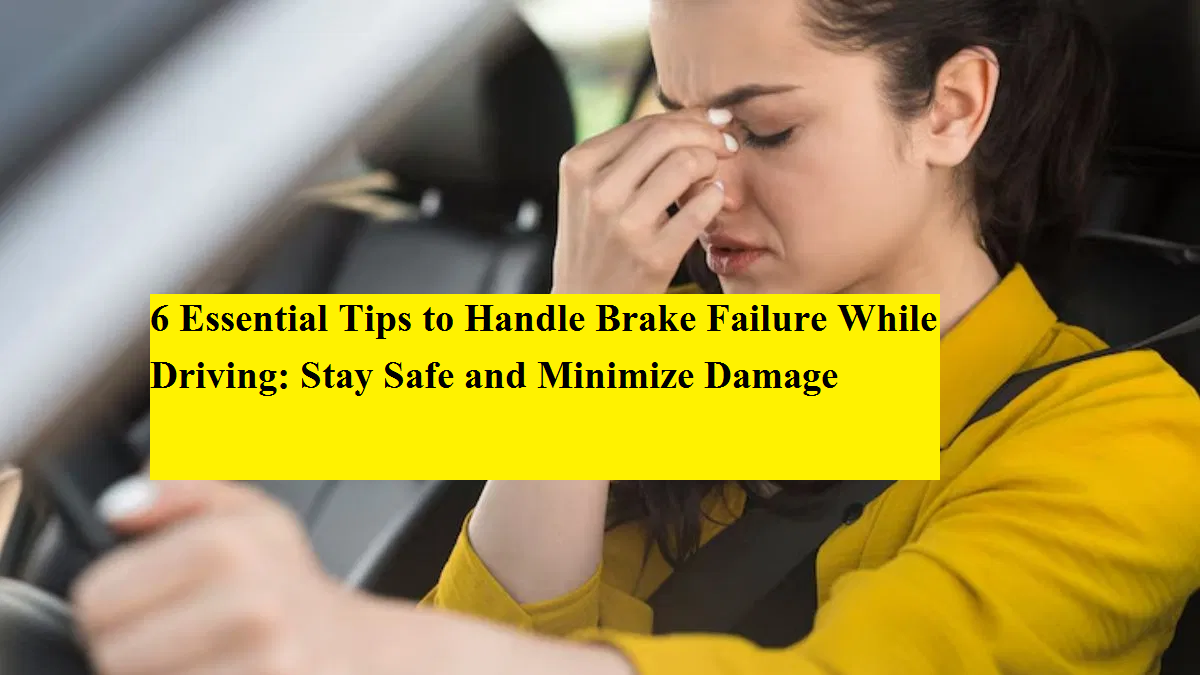6 Essential Tips to Handle Brake Failure While Driving: Stay Safe and Minimize Damage
- bySagar
- 28 Apr, 2025

Experiencing brake failure while driving is one of the most frightening situations for any driver. However, staying calm and taking the right actions can help you avoid major accidents and protect lives. In this article, we explain practical steps you should follow immediately after a brake failure and the safety checks you should do beforehand to minimize the risk.
1. Don't Panic: Stay Calm and in Control
The most important thing during a brake failure is not to panic.
Grip the steering wheel firmly to maintain control of the vehicle, even if the road is uneven or you encounter sudden bumps. Keeping a cool head will help you respond correctly and safely.
2. Gradually Downshift the Gears
If you’re driving a manual transmission car, start downshifting the gears slowly. Lower gears use engine braking to reduce speed naturally.
If you have an automatic transmission vehicle, shift the gear lever to 'L' (Low) or manual mode if available. This will slow down the car without relying solely on the brakes.
3. Turn on Hazard Lights and Use the Horn
Alert other drivers about your emergency by immediately turning on the hazard lights.
Keep honking intermittently to grab the attention of nearby vehicles, giving them time to move out of your way and avoid potential collisions.
4. Use the Handbrake Carefully
The handbrake (parking brake) can be a lifesaver, but use it carefully.
-
Pull it slowly and gently to avoid sudden locking of the rear wheels, which could cause the vehicle to spin out of control.
-
Avoid yanking it harshly unless absolutely necessary.
Controlled application of the handbrake can help bring your car to a safe stop.
5. Steer Towards a Safe Spot
If you're on a highway or busy road, try to steer your vehicle towards the side of the road.
Driving onto rough surfaces like gravel, grass, or even sand piles can help reduce the car’s speed more quickly and safely.
In extreme cases, light contact with barriers like roadside walls can be used to bring the vehicle to a halt, but this should be a last resort.
6. Take Preventive Measures
The best way to deal with brake failure is to prevent it from happening in the first place.
-
Regularly check brake fluids and brake pads for wear and tear.
-
Get your car thoroughly inspected before long journeys.
-
Always drive at a controlled speed, especially in heavy traffic or adverse weather conditions.
Routine maintenance not only ensures a smooth drive but also keeps you and others safe on the road.
Final Thoughts
Brake failure can be terrifying, but a calm mind, quick thinking, and the right moves can make all the difference.
Remember: preparation is key. Always maintain your vehicle well and stay alert while driving to handle emergencies like a pro.






